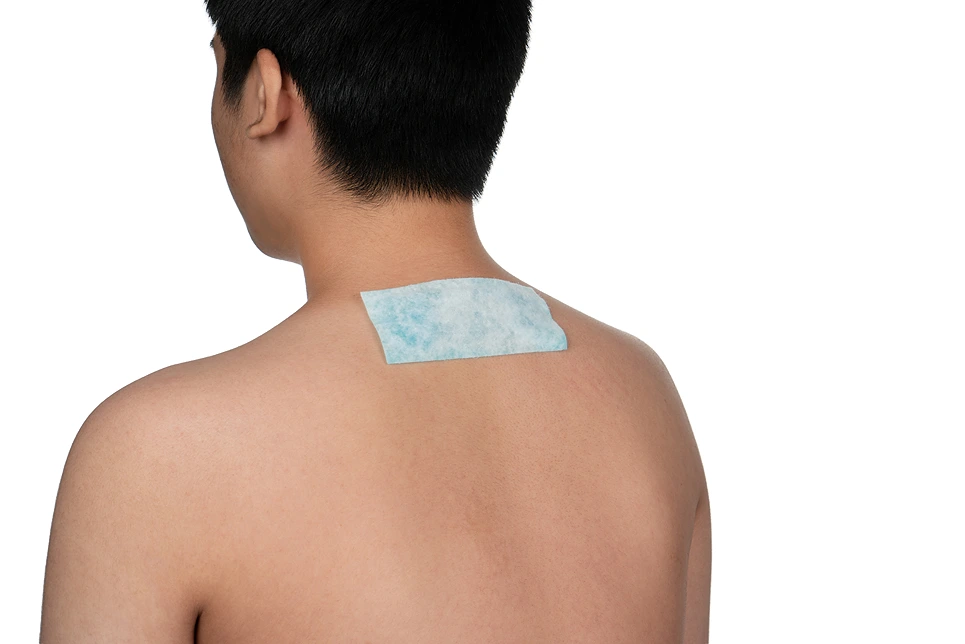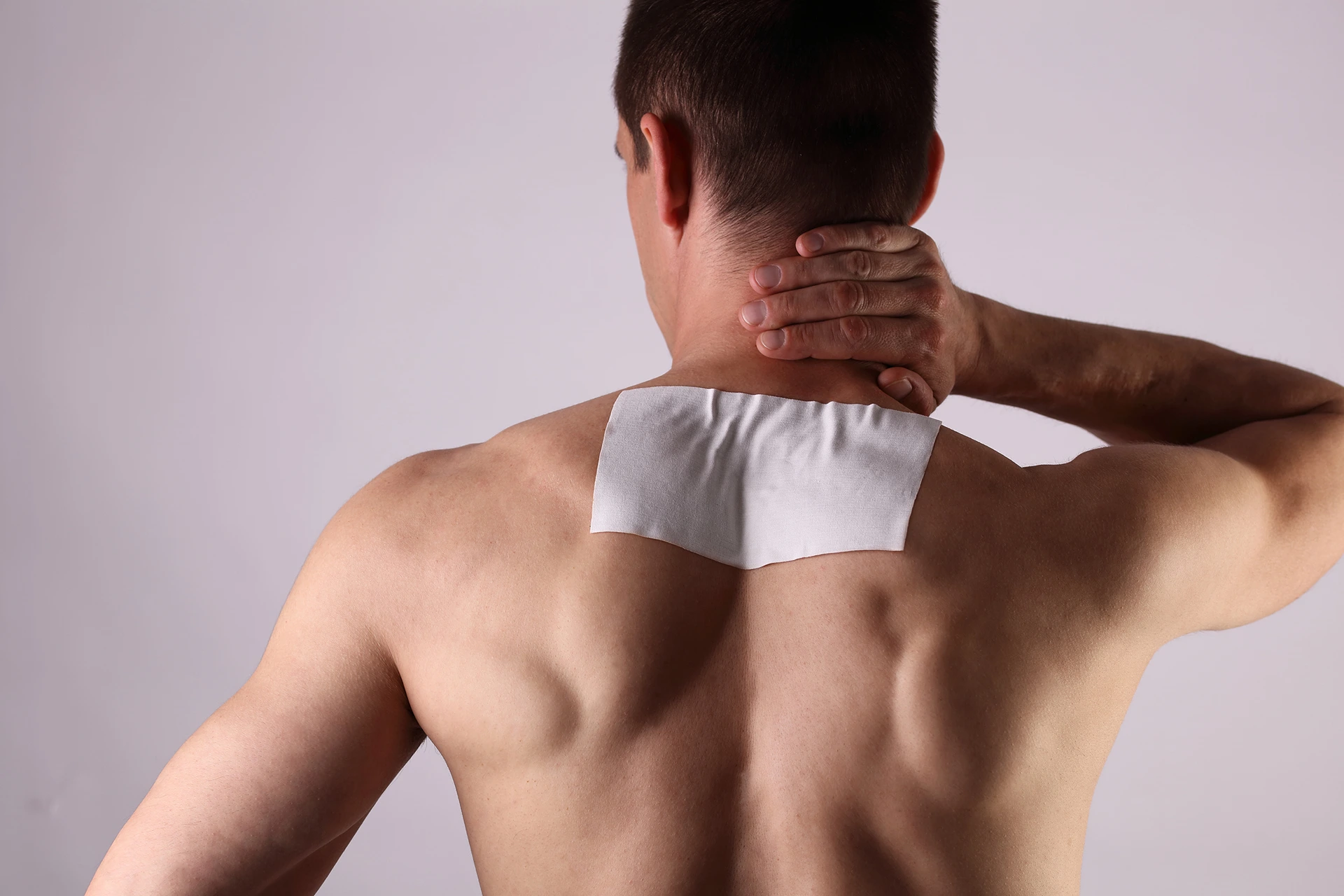If you’re one of the millions of adults suffering from ongoing back pain, you know just how debilitating it can be. The aches and stiffness can make it difficult to get through your daily activities and enjoy life.
But what if we told you there was a simple, drug-free way to finally stop the pain – lidocaine patches.
What is Lidocaine?
Lidocaine is a mild numbing medication that blocks pain signals in the nerves under your skin. When delivered through a patch, it goes directly to the source of the pain in your back muscles and joints. This provides targeted relief right where you need it most.
The best part is that very little lidocaine gets absorbed into your bloodstream, so you avoid systemic side effects like drowsiness or dizziness. The numbing sensation stays localized under the patch.
How Do Lidocaine Patches Relieve Back Pain?
Studies show lidocaine patches can reduce both acute and chronic back pain significantly. Patients experience less frequent and less intense pain episodes when using them. The relief may start working within hours and last for up to 12 hours from one patch application.
We know you likely have many questions about how lidocaine patches can help relieve your back pain. The best way we can provide more details is through an FAQ section. Below we’ve answered some of the most frequently asked questions about lidocaine patches for back pain.
Lidocaine Patch for Back Pain FAQs
What does lidocaine do for back pain?
Lidocaine works in two ways to relieve back pain when delivered transdermally in patch form:
- Numb irritated nerves – Lidocaine blocks sodium channels on hypersensitive nerves that relay pain signals to the brain from the back. This provides localized numbness.
- Relax muscles – Lidocaine suppresses pain receptors in tightened back muscles allowing them to relax. This reduces spasms and discomfort.
In addition to blocking pain, lidocaine patches induce a gentle warming sensation that increases blood flow to the painful area. For chronic back pain with a neuropathic component, lidocaine patches can provide targeted relief without systemic medication side effects.
What are the side effects of lidocaine patches for back pain?
Lidocaine patches are well tolerated when used correctly, but some potential side effects may occur:
- Skin irritation – Redness, rash, swelling or itching under the patch is possible if you have sensitive skin.
- Numbness – A temporary loss of sensation or numb feeling is normal where the patch is applied.
- Drowsiness – Rarely, lidocaine can cause drowsiness if large amounts are absorbed systemically.
- Irregular heartbeat – High amounts of lidocaine absorbed in the blood can cause an abnormal heart rhythm.
To avoid risks, only use the recommended number of lidocaine patches per day. Never apply to broken, damaged, or irritated skin. Stop use if irritation or numbness spreads beyond the patch placement area.
Can I buy a lidocaine patch for back pain over the counter?
Yes, some types of lidocaine patches for back pain are sold over-the-counter without a prescription. Look for OTC brands like Salonpas, Aspercreme, Bengay, and Icy Hot at pharmacies and drugstores. These contain lower potency lidocaine, typically around 4%.
OTC lidocaine patches provide temporary numbness that can relieve sore, strained back muscles. They may also calm irritated nerves contributing to back aches. Common locations to find OTC lidocaine patches include:
- Drugstore chains – CVS, Walgreens, Rite Aid
- Supermarkets and superstores – Walmart, Target, Costco
- Pharmacies – Walgreens, CVS, local independent pharmacies
What is the correct dosage of a lidocaine patch for back pain?
It’s important to follow dosage guidelines when using lidocaine patches for back pain:
- OTC 4% lidocaine patches – Apply up to 3 patches at a time for no more than 12 hours per day. Use on intact skin only.
- Prescription 5% lidocaine patches – Apply up to 3 patches daily for up to 12 hours each. Rotate patch placement sites.
- Do not cut patches into smaller sizes or shapes. Never use heat sources like heating pads with the patches.
- Allow at least 4 hours between patch applications. Give your skin a rest from the patches for 12 hours out of every 24 hour period.
- Use lidocaine patches for 5 days maximum unless directed otherwise by your doctor. Discontinue use if irritation develops.
Consult your physician if your pain persists using the recommended OTC lidocaine patch dosage. Stronger prescription patches may be needed for chronic neuropathic back pain.
Where should I put a lidocaine patch for back pain?

The best location to place a lidocaine patch depends on the source of your back pain:
- Lower back pain – Stick the patch across the lumbar muscles in the dimples above your buttocks.
- Middle back pain – Apply the patch between your shoulder blades or over tender spasming muscles.
- Upper back pain – Position the patch on sore spots under your neck and shoulders near the shoulder blades.
- Radiating pain – Cover the area where sciatic nerve or referred pain originates in the back before radiating outward.
| Area of Back Pain | Recommended Patch Placement |
| Lower Back | Above buttocks in lumbar region |
| Middle Back | Between shoulder blades |
| Upper Back | Under neck near shoulders |
| Radiating Back Pain | Over origin point before radiation |
Make sure to always adhere patches to clean, dry skin without hair. Follow dosage guidelines and rotate patch placement every day. Targeting the most painful trigger points allows lidocaine to penetrate and numb the irritated tissues.
Can I put heat on a lidocaine patch?
No, you should never apply heating pads or other heat sources over lidocaine patches or gels. Heating lidocaine products can increase absorption through the skin into the bloodstream and raise your risk of side effects.
Remove any lidocaine patches before taking hot baths, showers, or saunas as well. Extended exposure to heat can make you absorb too much lidocaine from patches on your skin. Avoid potential adverse effects by using lidocaine patches as directed without heat.
How long does a lidocaine patch for back pain last?
How long a lidocaine patch lasts depends on the type:
- OTC 4% lidocaine patches – Pain relief lasts for about 8 to 12 hours. Reapply up to 3 patches per day.
- Prescription 5% lidocaine patches – Relief can last up to 12 hours from one patch. Effects may persist for 24 hours.
The lidocaine patch adhesive will wear off after 12 to 24 hours requiring a new patch application.
To extend the benefits, apply a new lidocaine patch to a different location when the previous patch expires.
Can I sleep with a lidocaine patch on my back?
Yes, you can safely sleep with lidocaine patches on your back. The low doses delivered through the skin provide continued pain relief overnight. Rotate placement daily, check for irritation, don’t exceed the maximum dosage, avoid dislodging, and don’t apply heat over the patches.
Is a lidocaine patch useful for back spasms?
Yes, lidocaine patches can help manage pain and discomfort from back muscle spasms. By numbing irritated nerves, they calm involuntary spasms and cramping. OTC and prescription patches have been shown effective, especially for acute spasms. Apply directly to spasming muscles in the lower back and keep in place up to 12 hours to help relax the spasms.
What are the best brands of lidocaine back patches?
Some of the top recommended brands of lidocaine patches for back pain include:
- Lidoderm – This is a prescription 5% lidocaine patch made by Endo Pharmaceuticals. It’s FDA approved to treat neuropathic pain.
- Ztlido – Another prescription lidocaine patch made by Scilex Pharmaceuticals with 5% lidocaine. Ztlido patches provide pain relief for up to 24 hours.
- Salonpas – An over-the-counter 4% lidocaine patch from Hisamitsu Pharmaceuticals. Salonpas makes several types of patches specifically for back pain.
- Aspercreme with Lidocaine – Contains 4% lidocaine combined with trolamine salicylate for muscle and joint pain relief.
- Bengay Ultra Strength Pain Relieving Patch – This OTC patch contains 4% lidocaine for temporary numbness and pain relief.
What is the strongest over the counter lidocaine patch?
The strongest lidocaine patches available over the counter contain 4% lidocaine. Brands like Salonpas, Aspercreme, and Bengay Ultra Strength offer the highest lidocaine concentrations without a prescription.
Prescription lidocaine patches contain 5% to 10% lidocaine, making them more potent than OTC options.
Can I use a lidocaine patch for back pain during pregnancy?
Lidocaine patches may be used for back pain during pregnancy but be sure to consult your obstetrician first. The limited amounts of lidocaine absorption into the bloodstream from topical patches are considered safe for pregnant women when used as directed.
OTC lidocaine patches with 4% lidocaine are preferred over prescription patches during pregnancy. Tell your doctor at each prenatal visit if you are using lidocaine patches to manage back pain. Your doctor can confirm it’s still safe and recommend how often to use the patches.
Is a lidocaine patch effective for a herniated disc?
Yes, lidocaine patches can provide localized pain relief and may help manage discomfort from a herniated disc. Since the medication is delivered through the skin, it can target nerve pain and numb the area around a herniated disc without systemic side effects.
In clinical studies, 5% prescription lidocaine patches significantly reduced pain and discomfort associated with herniated discs.
Kaly Can Help

At Kaly, we’re here to support you on your journey to being pain-free. Reach out anytime if you have questions about using lidocaine patches or want to learn about other proven treatments that could help you take your life back.
